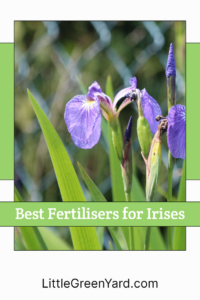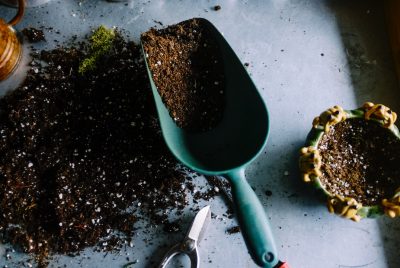Best Fertilisers for Irises
Hello gardening enthusiasts! If you’re as passionate about gardening as I am, you’ll understand the joy that comes with nurturing beautiful blooms in your garden. Irises, with their stunning, vibrant petals and elegant foliage, are a true testament to nature’s artistry. However, to ensure your irises thrive and dazzle, you need to choose the right fertilisers for your Irises to ensure that they continue to grow and bloom beautifully. In this article, I’ll be your gardening companion, sharing my insights and expertise on the best fertilisers for irises, how to grow them, and where to plant them for a truly captivating garden.
I also found this great guide on how to plant and care for irises:
Greek Goddess of the Rainbow
Irises come from the genus Iris, named after the Greek goddess of the rainbow. They represent one of the most diversified genera within the order Asparagales, well-known for its wide palette of flower colours and patterns, ranging from extremely dark, purple flowers, through violet and pink, to yellow and white flowers. There are over 300 known Iris species which are widely growing in the Northern Hemisphere, though a large number of endemic species come from the Mediterranean and Asia.
Growth and Habit
There is an iris for every garden, and you will surely find one that suits the conditions in your garden. Irises are actually one of the easiest perennials to grow and very little is needed to let the irises flourish, but a few key tips can make all the difference:
- Sunlight Is Essential: Irises thrive in full sunlight. Make sure to plant them in an area where they receive at least six hours of sunlight each day.
- Well-Drained Soil: Irises detest soggy roots. Plant them in well-draining soil to prevent waterlogging, which can lead to root rot.
- Planting Depth Matters: When planting iris rhizomes, ensure they’re just at or slightly below the soil surface. Give them room to grow and multiply.
- Regular Watering: While irises don’t like wet feet, they do need consistent moisture. Water them regularly, especially during dry spells.
- Divide and Conquer: To keep your irises healthy and blooming, divide them every three to four years. This prevents overcrowding and revitalizes the plants. If the rhizomes get too congested together, they will not flower.
Cultivation of Irises
Plant bare root irises between July and October, and plant pot grown irises any time. Look for rhizomes that are plump and healthy. To start off, plant the root rhizomes horizontally in the ground, with the top exposed and the roots underground.
Do not mistake the rhizome for the roots!! Do not bury the whole rhizome under the soil. At least half of the rhizome has to be exposed directly to the air/sun. This will ensure that the irises will flower.
But it is important not to plant the rhizomes too high, because the rhizomes will be exposed too much to the environmental elements and not survive.
After irises bloom, the care does not end! You”ll have to cut off the spent iris bloom stalks (deadhead), remove yellowing leaf tips and withered brown leaves so your irises look great for the rest of the growing season. If you’ve ever wondered how to care for iris after they finish flowering in spring and early summer, this video below will answer your questions!
Fertilisers for Irises
Irises, like any other plant, need the right nutrients to flourish. Too much nitrogen leads to irises with more green growth, and sometimes not to bloom at all, so you’ll want minimal nitrogen. When it comes to fertilisers for Irises, there are several options to consider, but not all are created equal for irises. Look out for bloom-boosting fertiliser, with a higher Phosphorus ratio than nitrogen. Here are my top recommendations:
- Organic Compost: The beauty of organic compost is that it’s not only rich in nutrients but also environmentally friendly. Compost provides a slow release of essential elements like nitrogen, phosphorus, and potassium, promoting healthy iris growth without the risk of over-fertilisation.
- Balanced Granular Fertiliser: A balanced granular fertiliser with an Nitrogen-Phosphorus-Potassium (K) ratio of 5-10-10 is an excellent choice. These ratios provide a balanced diet for your irises, ensuring sturdy stems and vibrant blooms.
- Bone Meal: If you want robust, well-established iris roots, bone meal is the answer. It’s high in phosphorus, which encourages root development and, in turn, enhances flower production.
- Fish Emulsion: Fish emulsion is a fantastic organic option that provides a quick nutrient boost. It’s high in nitrogen, ideal for promoting lush, green foliage and robust iris plants.
- Epsom Salt: Irises often benefit from magnesium, which helps prevent yellowing of the leaves. Dissolve Epsom salt in water and apply it to your irises to keep them healthy and vibrant.
Where to Plant Irises for Garden Splendor
Irises can be versatile additions to your garden, but where you plant them can significantly impact their visual appeal. Here are some suggestions:
- Along the Garden Border: Plant irises along garden borders to create a striking and defined edge. The contrasting colors and elegant blooms will make your garden pop.
- Water’s Edge: Irises love the moisture at the edge of ponds or streams. Their reflections in the water create a mesmerizing effect.
- Mixed Flower Beds: Combine irises with other perennials to create a captivating blend of colors and textures. They’ll add a touch of elegance to your flower beds.
- Rock Gardens: Irises can thrive in rock gardens, where well-drained soil and plenty of sunshine are readily available.
- Container Gardening: If space is limited, consider growing irises in containers on your patio or balcony. They’ll still dazzle with their blooms.
How to Divide and Replant Irises
In late summer or early autumn, your irises plants can be lifted safely and divided and then replanted. Always keep the rhizomes close to the surface of the soil but let the roots fall into their natural position which is why I use the “W” shaped trench to replant. While you have them out of the ground and can examine them at close quarters, check for Iris Rot, disease or eggs before replanting. Bearded Iris need to be lifted and divided every 3-5 years to keep them rejuvenated.
In your pursuit of a stunning garden, irises should be a top choice. With the right fertilizers, proper care, and strategic planting, you can watch these magnificent flowers flourish and transform your outdoor space into a work of art. Remember to choose organic options like compost and bone meal for sustainable growth, provide them with the right amount of sunlight, and keep the soil well-drained. With a little love and attention, your irises will reward you with their breathtaking beauty year after year.
By the way, I’ll like to also share this post on Companion Planting Flowers for Your Vegetable Garden, and Michelle shares about these 5 beautiful annuals. Share your thoughts on which is your favorite flower!
FAQs
- How often should I fertilise my irises? Fertilise your irises in early spring and again after they finish flowering in late spring or early summer. This twice-a-year schedule should provide them with the nutrients they need.
- Can I plant irises in pots? Yes, you can plant irises in pots or containers. Ensure the containers have good drainage, and use a well-balanced potting mix. Provide them with adequate sunlight for best results.
- Do irises require a lot of water? While irises do need consistent moisture, they don’t like soggy soil. Water them regularly but avoid overwatering. The soil should be well-draining.
- What is the best time to divide iris rhizomes? The best time to divide iris rhizomes is late summer or early fall, typically every three to four years. This rejuvenates the plants and encourages vigorous growth.
- Can I grow irises from seeds? Yes, you can grow irises from seeds, but it requires more time and patience than growing from rhizomes. Start the seeds indoors in pots, and transplant them to the garden once they are well-established seedlings.





